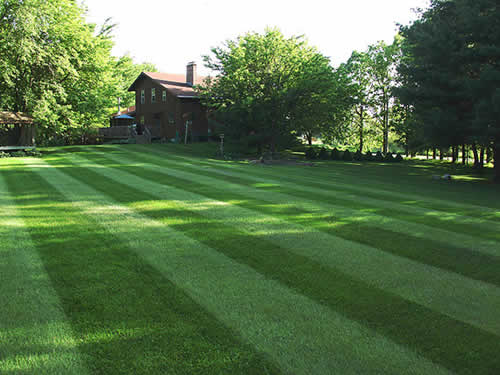![Grasses StripedLawn favorite london.52135847 Grasses]() Grasses And Landscaping.
Grasses And Landscaping.
If you plan to landscape your yard, be sure to do a good amount of research on the best types of plants for your area. Some grasses grown better in warmer regions, while others can survive a tough winter with ease. The same can be true for various bushes and trees.
A carefully chosen landscaping project can be used to showcase features, or distract the eye from certain unsightly structural aspects of a home or business. Highlight an interesting architectural detail with spot lighting, or sheared shrubs. Plant tall grasses to conceal unattractive elements, such as a visible foundation, or air-conditioning unit.
Before choosing a type of grass for your yard, consult a local landscaper. There are many varieties of grass seed and sod, and some will do better than others in different areas of the country. Some grasses prefer heat, while others need a dormant cold period. If you do not choose the right variety, you will spend a lot of time trying to maintain your yard.
When planning out your landscape design, carefully consider the colors of the flowers, trees and grasses that you intend to use. You may discover that limiting your palette to only one or two colors has the greatest visual impact. Choosing too many contrasting colors may make your landscaping appear disheveled and wild.
Before shelling out a ton of cash on trees, shrubs and grasses, locate a home and garden center that offers guarantees on its plants. Many independent nurseries offer at least a one-year guarantee on all plants. Doing so ensures that your money is well-spent on plants of the highest quality.
Add an element of movement to your landscape design to prevent it from feeling too stiff and boring. From tall, swaying ornamental grasses to bright flowers that invite flitting hummingbirds. You have lots of options for making your yard feel alive. Movement adds visual interest, enticing you to spend time in the area that you’ve worked so hard to create.
If your home is located in an arid part of the country, exercise caution when planting tall grasses in your yard. To reduce the risk of damage from wildfires, it is best to use short, grounded varieties of grass. If you absolutely must plant tall grasses, you should do so well over 100 feet away from your house.
Before you decide on a landscape plan, be sure to consider the amount of maintenance it will require. Depending on the plants you use and the climate you live in, you could need to water your lawn everyday. Additionally, some grasses may require you to cut your lawn more than once per week. Be sure you have the time to care for your new lawn.
Use plants which create privacy between your property and your neighbor’s. If you wish to create a privacy screen within the garden, consider using bamboo or other plants that are tall. These can also block an eyesore that may be in your neighbor’s yard, and keep children and pets in your garden.
Ornamental grasses can add a lot of texture to your beds of flowers and garden borders. Planting these types of grasses will provide some appealing texture to a flower bed or make a flowering border more visually interesting. Often they can be used as a border unto themselves. With multiple maintenance needs, you could discover the type of grass that you need.
Hopefully, this article has stimulated the landscaper in you, which can bring out the appearance that your home deserves. Let the beauty on the outside of your home, speak to all the strangers that pass by your home on a daily basis. You can transform your home to be the envy of anyone who passes by.
 Grasses And Landscaping.
Grasses And Landscaping.